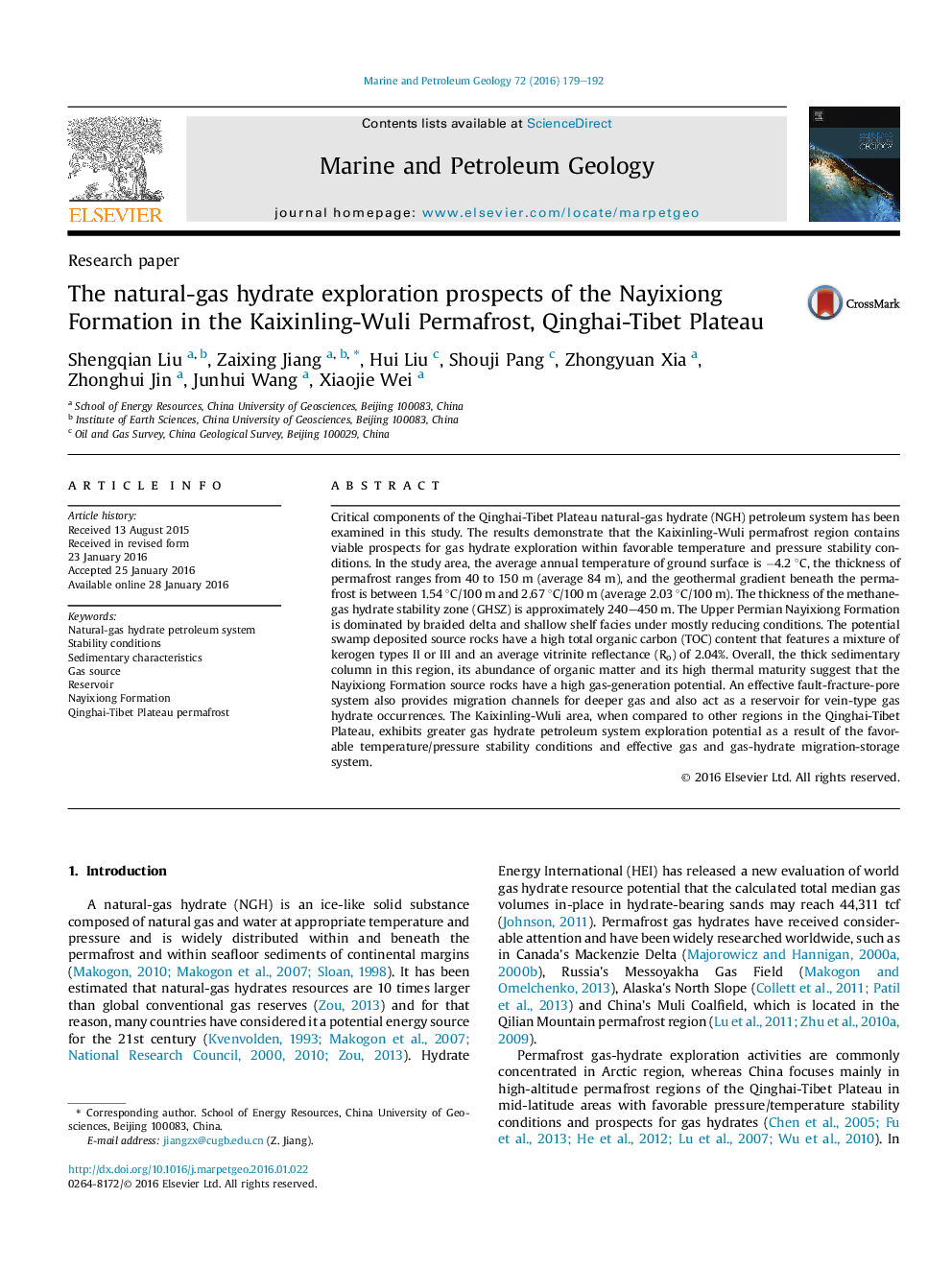| کد مقاله | کد نشریه | سال انتشار | مقاله انگلیسی | نسخه تمام متن |
|---|---|---|---|---|
| 6434486 | 1637155 | 2016 | 14 صفحه PDF | دانلود رایگان |
- The Kaixinling-Wuli area's temperature/pressure stability conditions are favorable to hydrate formation.
- The methane-gas hydrate stability zone (GHSZ) is approximately 240-450Â m.
- The organic matter of Nayixiong Formation features a mixture of kerogen types II or III and high maturity.
- An effective migration-storage system is necessary for vein-type gas hydrate.
Critical components of the Qinghai-Tibet Plateau natural-gas hydrate (NGH) petroleum system has been examined in this study. The results demonstrate that the Kaixinling-Wuli permafrost region contains viable prospects for gas hydrate exploration within favorable temperature and pressure stability conditions. In the study area, the average annual temperature of ground surface is â4.2 °C, the thickness of permafrost ranges from 40 to 150 m (average 84 m), and the geothermal gradient beneath the permafrost is between 1.54 °C/100 m and 2.67 °C/100 m (average 2.03 °C/100 m). The thickness of the methane-gas hydrate stability zone (GHSZ) is approximately 240-450 m. The Upper Permian Nayixiong Formation is dominated by braided delta and shallow shelf facies under mostly reducing conditions. The potential swamp deposited source rocks have a high total organic carbon (TOC) content that features a mixture of kerogen types II or III and an average vitrinite reflectance (Ro) of 2.04%. Overall, the thick sedimentary column in this region, its abundance of organic matter and its high thermal maturity suggest that the Nayixiong Formation source rocks have a high gas-generation potential. An effective fault-fracture-pore system also provides migration channels for deeper gas and also act as a reservoir for vein-type gas hydrate occurrences. The Kaixinling-Wuli area, when compared to other regions in the Qinghai-Tibet Plateau, exhibits greater gas hydrate petroleum system exploration potential as a result of the favorable temperature/pressure stability conditions and effective gas and gas-hydrate migration-storage system.
Journal: Marine and Petroleum Geology - Volume 72, April 2016, Pages 179-192
